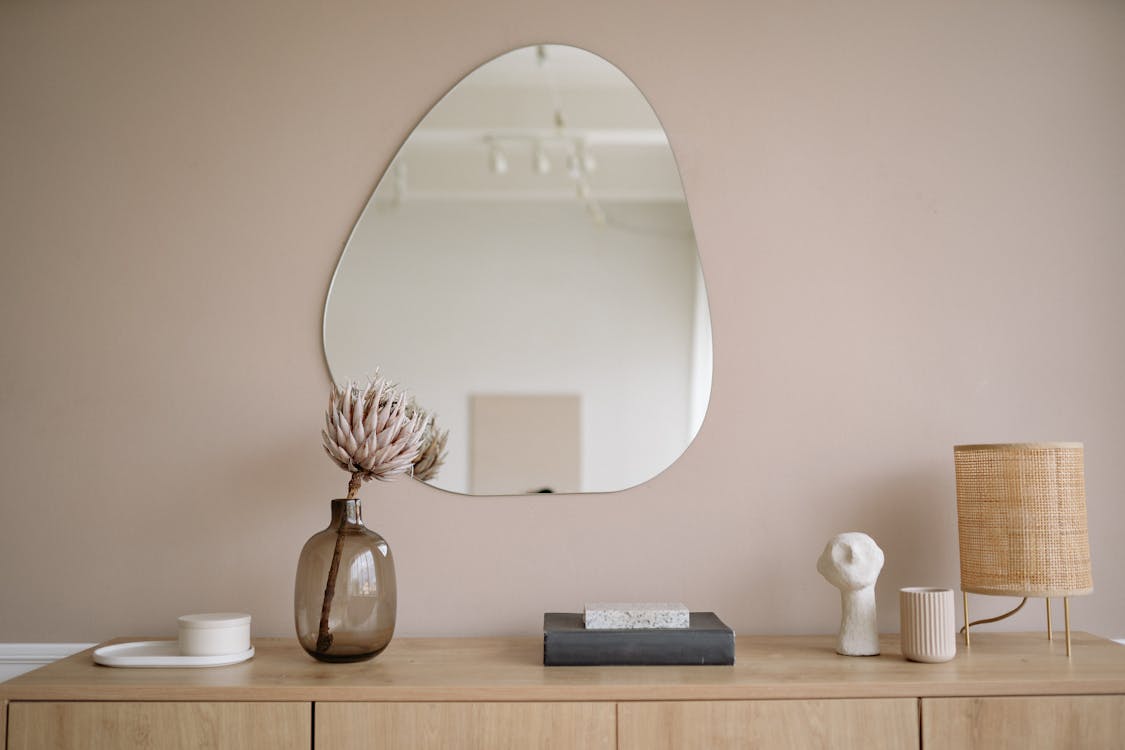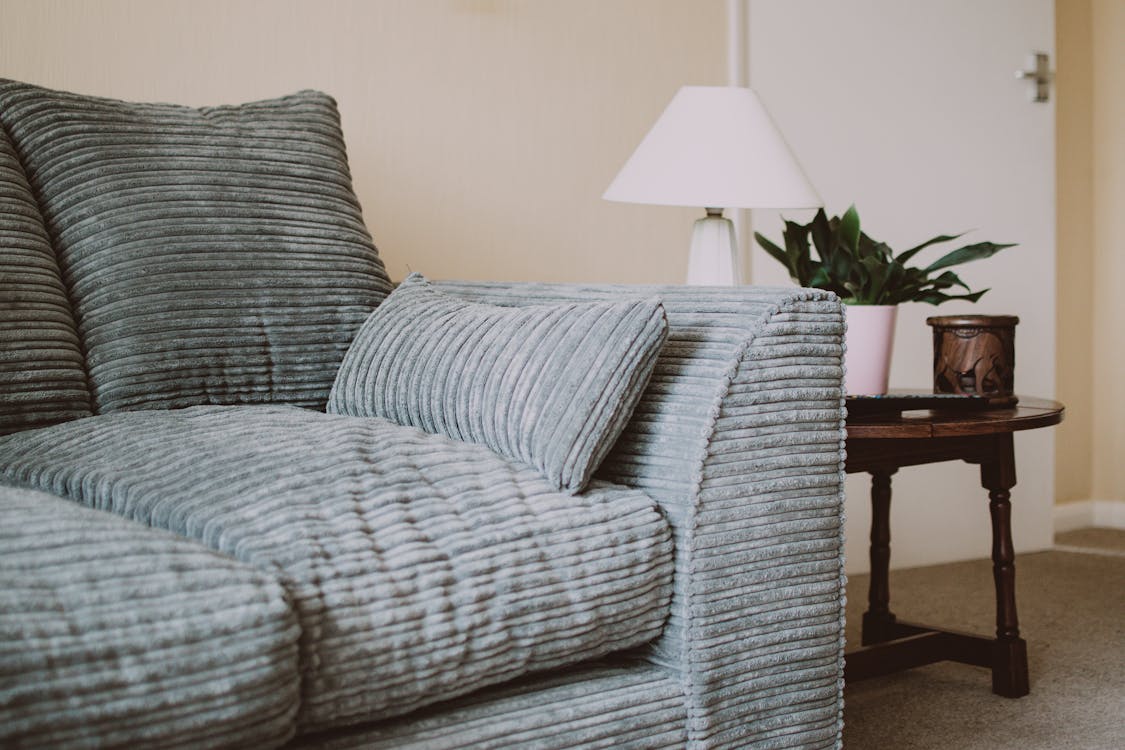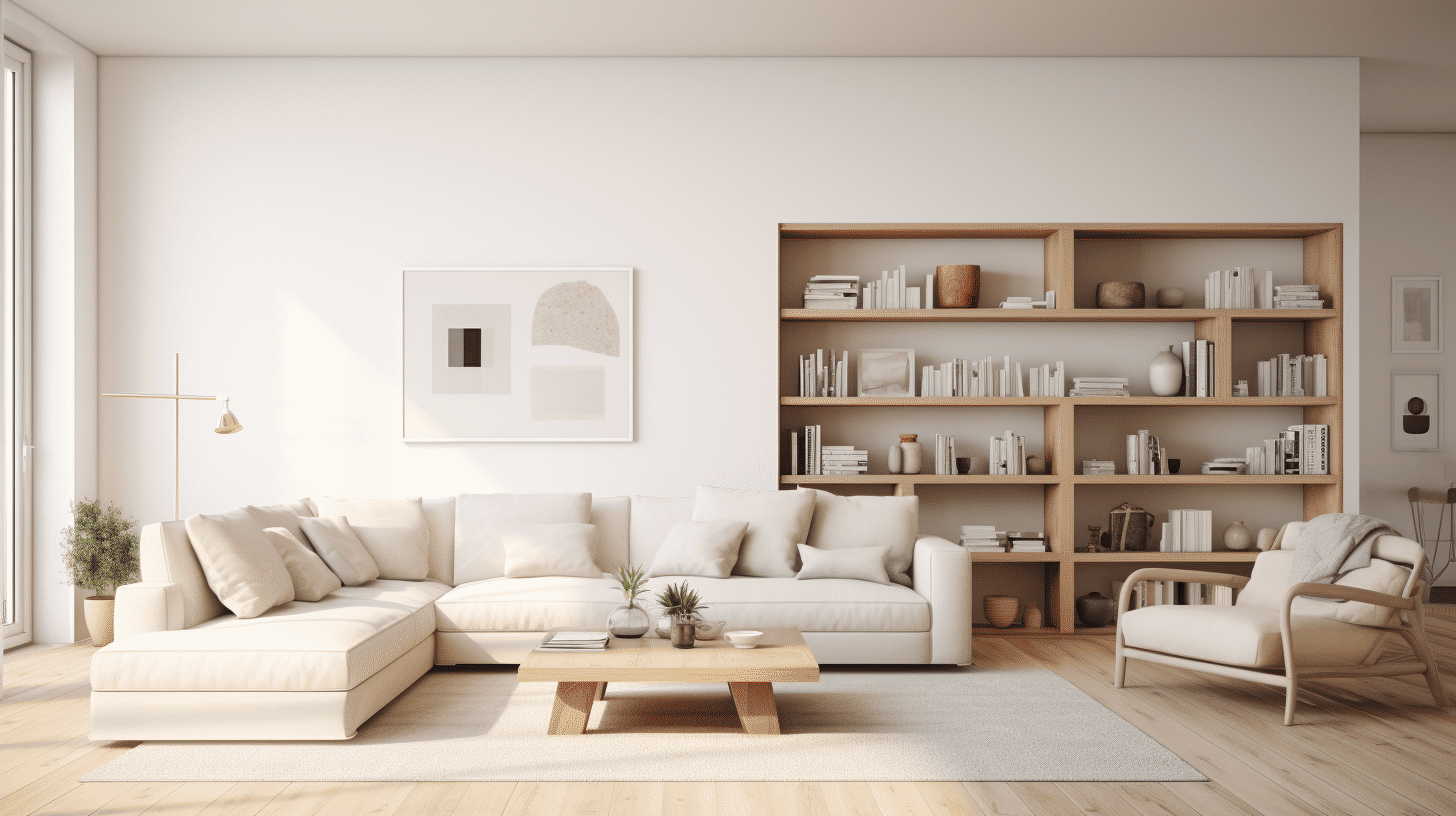In a world that often feels cluttered and overwhelming, it’s no wonder why minimalist living has gained popularity in recent years. Rooted in simplicity, functionality, and a focus on what truly matters, creating a minimalist home offers a calm and serene environment that can have a profound impact on our daily lives.
Embracing a minimalist lifestyle isn’t just about decluttering your physical space; it’s about embracing a mindset that values quality over quantity, intentionality over excess, and mindfulness over consumerism. By intentionally curating your living space and eliminating unnecessary distractions, you create a sanctuary that promotes inner peace and clarity.
Now, you might be thinking, “But how do I even begin creating a minimalist home?” Don’t worry, we’re here to guide you through the process. Whether you’re a complete beginner or someone looking to refine their minimalist approach, this beginner’s guide will equip you with the necessary knowledge and inspiration to transform your living space into a minimalist haven.
Throughout this guide, we’ll explore the benefits of creating a minimalist home, current trends in minimalist design, popular interior design styles for creating a minimalist home, and functional and aesthetic trends that can elevate your minimalist space. So, let’s dive in and embark on this journey towards a simpler and more intentional way of living.
Benefits of Creating a Minimalist Home

In today’s fast-paced world, many people are turning to minimalism as a way to simplify their lives and find more peace and contentment. A minimalist home is characterized by its simplicity, functionality, and lack of clutter. But beyond aesthetics, there are several compelling benefits to creating a minimalist living space. Let’s explore some of these benefits of creating a minimalist home below.
Improved Focus and Productivity
One of the key benefits of creating a minimalist home is that it creates an environment that promotes focus and productivity. With fewer distractions and a clean, uncluttered space, you can better concentrate on the task at hand and tackle your to-do list with ease.
Here’s how creating a minimalist home can help you boost your productivity:
- Minimized distractions: By removing unnecessary items and visual clutter, you can minimize distractions that may hinder your ability to concentrate. A clear workspace allows your mind to focus solely on the task in front of you.
- Enhanced organization: When everything has a designated place and is neatly organized, you can easily find what you need, saving time and reducing frustration. This streamlined approach promotes efficient work habits and can increase your productivity levels.
- Clear mental space: A minimalist home has a calming effect on the mind. By eliminating clutter, you create a space that allows your thoughts to flow freely, without the mental burden of physical clutter. This clarity of mind can help you think more clearly and make better decisions.
Reduced Stress and Anxiety
In our modern society, stress and anxiety have become all too common. However, creating a minimalist home can serve as a sanctuary from the chaos of the outside world and bring a sense of peace and tranquility. Here’s how:
- Calming environment: A clutter-free and organized home can create a sense of calm and serenity. When your living space is free of excess stuff, you’ll find it easier to relax and unwind.
- Simplified routines: Creating a minimalist home encourages simplicity in all areas of life, including daily routines. With fewer possessions and a simplified lifestyle, you’ll spend less time on maintenance and upkeep, freeing up time for activities that bring you joy and reduce stress.
- Mindful consumption: Adopting a minimalist mindset means being intentional about what you bring into your home. This mindset promotes mindful consumption and can help you break free from the constant urge to accumulate more things. By focusing on what truly matters to you, you’ll reduce the desire for material possessions and experience a sense of contentment.
Enhanced Cleaning and Maintenance
Keeping a tidy and well-maintained home can be a daunting task, especially when you have a lot of clutter. However, creating a minimalist home simplifies the cleaning and maintenance process, making it more manageable and less time-consuming. Here’s how:
- Less to clean: With fewer possessions, there are fewer surfaces to dust and clean. This means less time spent on household chores and more time for activities you enjoy.
- Quick and efficient cleaning: When your home is free of clutter, it’s easier to clean and maintain. You can quickly and efficiently wipe down surfaces without having to move or declutter multiple items. This streamlined approach to cleaning saves you time and energy.
- Improved indoor air quality: Creating a minimalist home tends to have better air quality because there are fewer items that collect dust and allergens. With a clean and clutter-free environment, you can breathe easier and enjoy a healthier living space.
In conclusion, creating a minimalist home offers a multitude of benefits, ranging from improved focus and productivity to reduced stress and anxiety. By embracing simplicity and decluttering your living space, you can create a sanctuary that promotes a sense of peace and contentment. Additionally, the streamlined nature of creating a minimalist home makes cleaning and maintenance more manageable, allowing you to have more time for the things that truly matter. So why not consider embracing minimalism and experience the positive impact it can have on your life?
Also Read: Tips for Design a Modern and Minimalist Bedroom
Minimalist Trends in Home Design

In the ever-evolving world of home design, minimalist trends have become increasingly popular. Homeowners are seeking simplicity, clean lines, and functionality in their living spaces. This article will explore several key minimalist trends that are influencing the way we design our homes. From incorporating mobile device usage to increasing interior design improvements, embracing biophilic design to mixing and matching aesthetics, these trends offer a fresh and modern approach to creating a serene and visually appealing home environment.
Incorporating Mobile Device Usage
With the rise of technology and the increasing reliance on mobile devices, it’s no surprise that minimalist design has begun to incorporate these devices seamlessly into home interiors. From wireless charging stations integrated into furniture to smart home systems that control various aspects of the household, the minimalist approach streamlines the integration of technology into our lives. By blending functionality and aesthetics, homeowners can enjoy the benefits of a digitally connected home without sacrificing the clean and uncluttered appeal of minimalism.
Increased Interior Design Improvements
Over the past couple of years, there has been a significant increase in the number of homeowners who have invested in interior design improvements. In 2022 and 2021, more than half of homeowners took it upon themselves to decorate their homes according to their personal taste and preference. This surge in interest demonstrates a growing desire to create a space that is not only aesthetically pleasing but also reflective of one’s individual style. Minimalism provides the perfect canvas for homeowners to express their creativity while maintaining a sense of simplicity through carefully curated design elements.
Biophilic Design
Another trend that is expected to rise in popularity in 2024 is biophilic design. This design concept draws inspiration from nature and emphasizes the connection between humans and the natural world. Biophilic design incorporates elements such as natural light, indoor plants, and organic materials to create a calming and restorative atmosphere within the home. By bringing nature indoors, homeowners can experience the benefits of improved well-being, increased productivity, and a greater sense of harmony with their surroundings.
Mixing and Matching Aesthetics
As minimalism continues to evolve, there is a growing trend of mixing and matching aesthetics. This approach allows homeowners to blend different design styles and create unique and personalized spaces. For example, combining vintage and reclaimed furniture pieces with more contemporary elements can create a harmonious blend of old and new. This approach not only adds visual interest but also allows homeowners to infuse their space with character and individuality.
In conclusion, minimalist trends in home design are reshaping the way we create living spaces. From incorporating mobile device usage to embracing biophilic design, these trends offer a fresh and modern approach to interior design. By focusing on simplicity, functionality, and personal expression, homeowners can create spaces that are not only visually appealing but also promote a sense of tranquility and well-being. So, whether you’re looking to revamp your home or start from scratch, embracing minimalist trends can help you achieve a space that is both stylish and harmonious.
Interior Design Styles for a Minimalist Home

Are you looking to create a serene and clutter-free space in your home? A minimalist interior design style might be just what you need. With its focus on simplicity, functionality, and clean lines, minimalist design can transform any space into a tranquil oasis. Let’s explore two popular interior design styles that are perfect for achieving a minimalist aesthetic.
Mid-century Modern Style
One interior design style that has made a strong comeback in recent years is mid-century modern. Inspired by the design trends of the mid-20th century, this style combines clean, sleek lines with organic shapes and natural materials.
Here are some key features of mid-century modern design:
- Clean lines and simplicity: Mid-century modern design embraces simplicity and avoids unnecessary ornamentation. Straight lines and geometric shapes are commonly used to create a clean and streamlined look.
- Natural materials: Wood is a prominent material used in mid-century modern design. From furniture to flooring, warm-toned woods like teak and walnut add a natural and organic element to the space.
- Functionality: With a focus on functionality, mid-century modern pieces are often multifunctional. Furniture pieces like platform beds and modular storage units are designed to maximize space and minimize clutter.
- Iconic furniture: Mid-century modern design is known for its iconic furniture pieces. Think of iconic designs like the Eames lounge chair or the Saarinen tulip table. These timeless pieces not only add a touch of elegance to a minimalist space but also serve as focal points.
Elevated Finishes and Decor Pieces
Another interior design trend that is gaining popularity within the minimalist movement is the use of elevated finishes and decor pieces. This style blurs the lines between maximalism and minimalism, creating a sophisticated and curated look. Here are some key features:
- Contrasting textures: Incorporating various textures adds depth and visual interest to a minimalist space. Mixing materials like metal, glass, and velvet creates a luxurious and modern feel.
- Unique statement pieces: Instead of cluttering the space with multiple decor items, focus on a few well-curated statement pieces. A large abstract painting, a sculptural vase, or a bold pendant light can become the focal point of the room.
- Strategic use of color: While minimalist spaces often lean towards a neutral color palette, using pops of color strategically can add personality and vibrance. Consider using a single vibrant hue or opting for a monochromatic color scheme to create visual impact.
- Minimalist luxury: This style embraces the idea of quality over quantity. Investing in high-quality materials, such as marble countertops or hardwood flooring, adds an air of luxury to the minimalist space.
Incorporating these interior design styles into your home can help you achieve a minimalist aesthetic without sacrificing style or comfort. Whether you prefer the timeless appeal of mid-century modern design or the elevated finishes and decor pieces, there is a minimalist style that suits your taste. Embrace simplicity, functionality, and clean lines to create a space that promotes relaxation and tranquility.
Minimalist Trends in Home Design

Floating Sinks and Vanities
In the world of home design, minimalism continues to make its mark with its clean lines, simplicity, and overall sleek aesthetic. One trend that is expected to gain momentum in the coming year is the use of floating sinks and vanities in kitchens and bathrooms. This innovative design feature not only adds a touch of modernity to these spaces but also offers several functional benefits.
What exactly are floating sinks and vanities, you may ask? Well, they are fixtures that appear to be suspended in mid-air, without any visible supports or legs. Instead of resting on the floor, they are mounted directly to the wall, creating the illusion of a floating effect. This minimalist approach not only creates a visually striking focal point but also opens up the floor space, giving the room an airy and spacious feel.
But why are floating sinks and vanities expected to be such a big minimalism trend in 2024? Let’s explore some of the reasons behind their popularity:
- Sleek and Modern Look: Floating sinks and vanities have a sleek and contemporary appearance that seamlessly blends with minimalist design. The absence of visible supports or legs creates clean lines, making the fixtures appear effortlessly stylish.
- Space-Saving Solution: The floating design of sinks and vanities ensures that no floor space is wasted. This is particularly advantageous in smaller bathrooms and kitchens, where every inch counts. By mounting the fixtures on the wall, you free up valuable floor space, making the room feel more spacious and uncluttered.
- Easy Cleaning and Maintenance: Without the obstruction of support legs, cleaning becomes a breeze. You can effortlessly sweep and mop the floor without having to navigate around the base of the sink or vanity. This not only saves time but also helps maintain a cleaner and more hygienic environment.
- Versatile Placement Options: The flexibility of floating sinks and vanities allows for creative placement options. They can be positioned at various heights to accommodate users of different heights or individuals with mobility challenges. This customization adds a touch of personalization to the space and ensures maximum functionality.
Whether you’re remodeling your bathroom or giving your kitchen a fresh new look, floating sinks and vanities are a trend worth considering. They combine both form and function, enhancing the minimalist design aesthetic while offering practical benefits. So, if you’re looking to create a modern and uncluttered space that maximizes the use of floor space, keep an eye out for this minimilism trend in 2024.
Note: The content provided in this section is based on the general trends observed in minimalistic home design.
Conclusion
In conclusion, creating a minimalist home can have numerous benefits for individuals looking to simplify their lives and find peace in their living spaces. By adopting minimalist design principles, such as decluttering and selecting clean-lined furniture, homeowners can enjoy improved focus and productivity, reduced stress and anxiety, as well as enhanced cleaning and maintenance routines.
To explore more tips and inspiration for creating a minimalist home, visit Minimalist Home Guru. They offer guidance and advice tailored to new home buyers who appreciate the minimalist aesthetic. Whether you’re looking to declutter, select the perfect furniture, or create a calming and clutter-free living space, Minimalist Home Guru has you covered. Start your journey towards a minimalist home today!
Frequently Asked Questions
- What is a minimalist home?
A minimalist home is a living space that emphasizes simplicity, functionality, and intentional design. It involves decluttering, reducing excess belongings, and focusing on essential items that bring peace and balance to the living environment. - What are the benefits of creating a minimalist home?
Creating a minimalist home can bring several benefits, including reduced stress and anxiety, easier maintenance and cleaning, improved focus and productivity, enhanced visual appeal, and a more organized and peaceful living space. - How can I start creating a minimalist home?
To start creating a minimalist home, begin by decluttering and getting rid of items you no longer need or use. Focus on keeping only essential and meaningful possessions. Simplify your furniture, color palette, and décor choices. Emphasize clean lines, open spaces, and functionality in your design. - What furniture and décor should I choose for a minimalist home?
When choosing furniture and décor for creating a minimalist home, opt for simple, sleek, and functional designs. Use neutral colors with occasional pops of color. Focus on quality over quantity and prioritize items with multiple uses and storage options. Eliminate unnecessary decorative items and aim for a clean and uncluttered look. - Are there any recommended resources or books for creating a minimalist home?
Yes, several resources and books can provide guidance and inspiration for creating a minimalist home. Some popular ones include ‘The Life-Changing Magic of Tidying Up’ by Marie Kondo, ‘Minimalism: Live a Meaningful Life’ by Joshua Fields Millburn and Ryan Nicodemus, and ‘Essentialism: The Disciplined Pursuit of Less’ by Greg McKeown.

